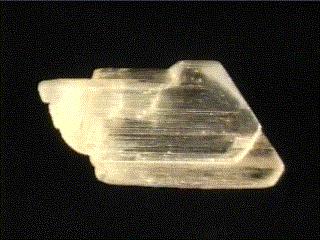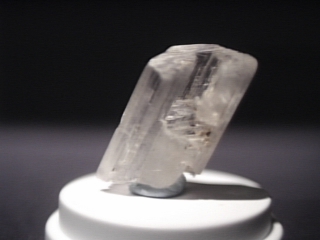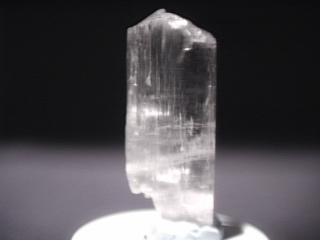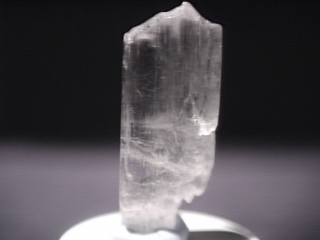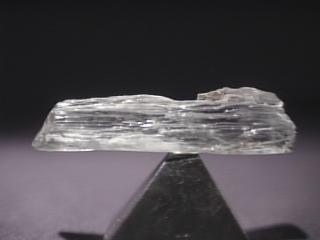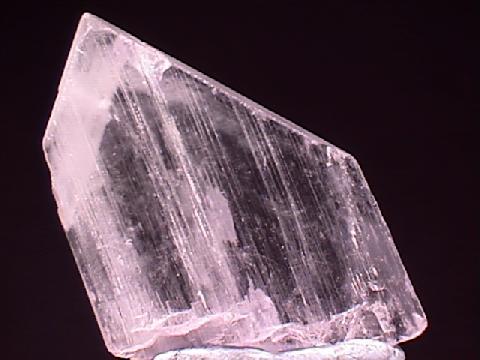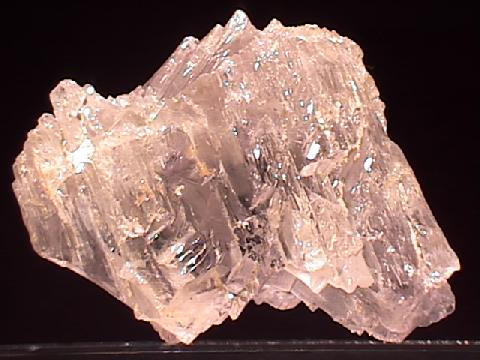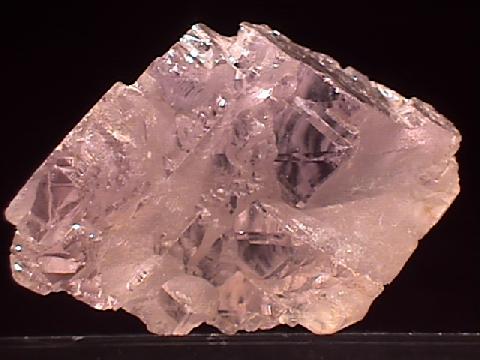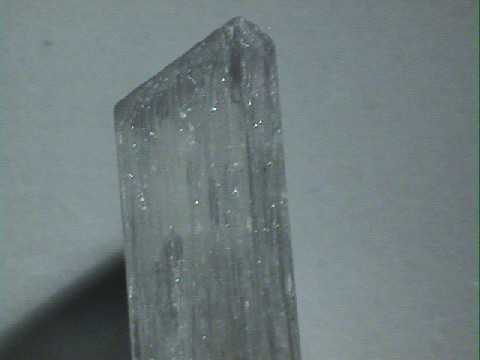 THE MINERAL SPODUMENE
THE MINERAL SPODUMENE
- Chemistry: LiAlSi2 O6, Lithium Aluminum Silicate
- Class: Silicates
- Subclass: Inosilicates
- Group: Pyroxenes
- Uses: gemstone and ore of lithium.
- Specimens
Also see variety specimens:
- Kunzite Specimens
- Hiddenite Specimens
Spodumene is a rock forming mineral in granites and pegmatites that bear other lithium minerals.
Spodumene is a relatively new mineral to science, being discovered in the last three centuries and gem varieties have only been discovered in the last 120 years.
Transparent deeply colored spodumene has two varieties called
Kunzite and
Hiddenite.
Kunzite is the more common of the two and is known by most gemstone collectors and fanciers.
It is a lovely pink to lilac color that is unique in the gem kingdom.
Hiddenite comes North Carolina and is not well known or abundant.
It has an usual green color that is unlike either peridot or emerald.
Spodumene is strongly pleochroic and therefore a gem cutter must take care to orient the stone in the best position for the deepest color.
Spodumene's cleavage, parting and fracture also make it a challenge for any gem cutter.
PHYSICAL CHARACTERISTICS:
- Color is white, colorless, gray, pink, lilac, violet, yellow and green.
- Luster is vitreous.
- Transparency crystals are transparent to translucent.
- Crystal System is monoclinic; 2/m
- Crystal Habits include prismatic, generally flattened and elongated crystals.
The termination is usually the two faces of a dome or rounded, curved and faces indisernable.
Crystal faces are often pitted and rough.
Some crystals of spodumene have been found in record large crystals of more than 12 meters long.
- Cleavage is perfect in two direction at close to right angles and a parting direction that breaks diagonally transect one of the cleavage angles and is parallel to the typical flattening of the crystals.
- Fracture is splintery due to the cleavage and parting.
- Hardness is 6.5 - 7
- Specific Gravity is approximately 3.2 (slightly above average)
- Streak is white.
- Associated Minerals are lepidolite, plagioclase feldspars, quartz, tourmaline and topaz.
- Other Characteristics: index of refraction is 1.66, prism faces are deeply striated lengthwise and clear colorful varieties show strong pleochroic color intensity variation when a crystal is viewed from the top or bottom then from other directions.
- Notable Occurrences include California, North Carolina and South Dakota, USA; Afganistan; Pakistan; Brazil and Madagascar.
- Best Field Indicators are crystal habit, striated prisms, color, fracture and cleavage.
 THE MINERAL SPODUMENE
THE MINERAL SPODUMENE


